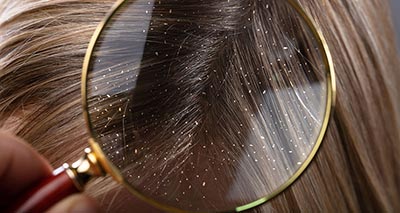
Dandruff is a common condition of the scalp that many people suffer from all over the world. Dandruff is white flakes that often fall to the shoulder or in many cases, can be seen from a distance on the scalp itself. Along with the visual evidence, the scalp tends to itch more which causes more flakes to be dislodged when scratched.
What is Dandruff?
Medically, dandruff is called seborrheic dermatitis. The actual condition is an inflammation of the skin. While it may seem like it is from a dry scalp, it is associated with greasy scales or oily scales. Most people suffer from dandruff on their heads, but it can occur on the lashes, nose, eyelids, and eyebrows as well. In males, it has been known for some to develop dandruff on their beards. It’s so common that as much as half of the whole population will experience dandruff at some point.
What Causes Dandruff?
There are many theories regarding the cause of dandruff, but the fact is, those with the condition have an epidermis that replicates much faster than usual. It is similar to psoriasis and in many cases, treating the affected area with anti-fungal medications has been effective in reducing it.
The skin on the body is home to millions of helpful bacteria. The yeast Malassezia, which is a type of fungus, can trigger an immune response by irritating the skin. The yeast also removes the natural fat in the area, and both issued combined results in the development of dandruff. Stress and being overtired can put a person at more risk of developing dandruff.
How Can I Get Rid of Dandruff?
Getting rid of dandruff or at least managing it requires care and dedication. You should always wash your hair with a shampoo that contains zinc pyrithione or ketoconazole, both of which are antifungal agents. These will help prevent the growth of the yeast that causes dandruff. For severe dandruff, a medicated anti-fungal lotion is also effective and can be used in all areas that produce dandruff, such as the face.
In the event that antifungals aren’t effective, you can ask a doctor to prescribe a steroid to help manage the inflammation that triggers the growth of yeast. Steroids used to treat dandruff can be found in lotion form, cream form, and even shampoo form. Like all steroids, continuous use can cause thinning of the skin, so it should be a last resort and not used as a long-term solution. Steroids have been noticed to cause stretch marks, tearing, and even bruising when used for extended periods of time.
However, there are less damaging creams that are equally effective. Specifically, calcineurin inhibitors can help control the symptoms of dandruff without damaging the skin. For long term use, these are the best option. There is no cure for dandruff, it can only be controlled.
